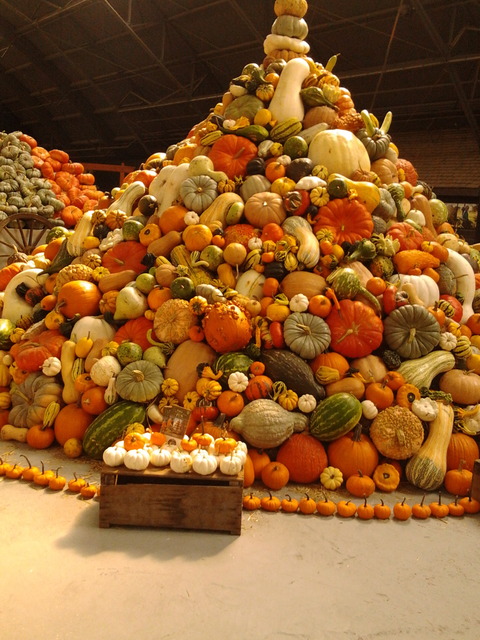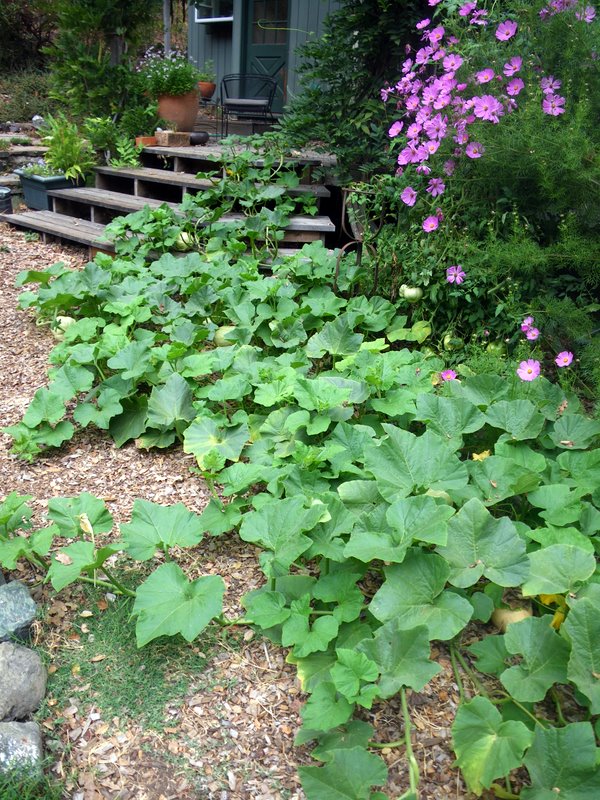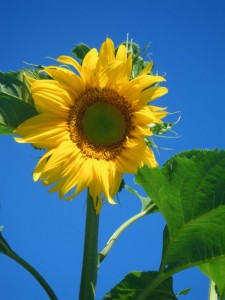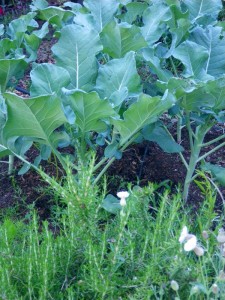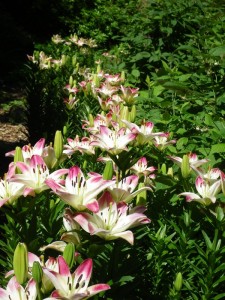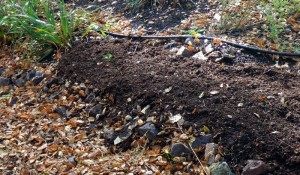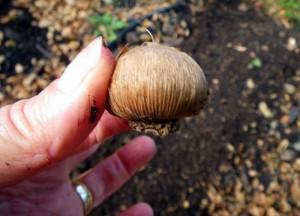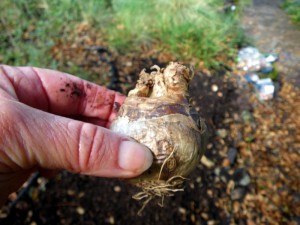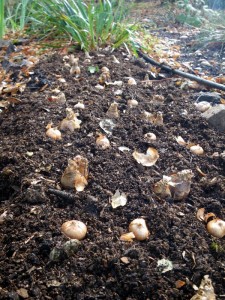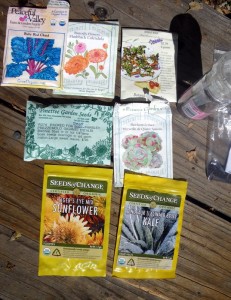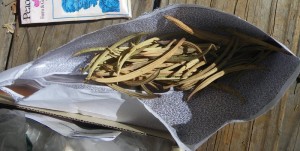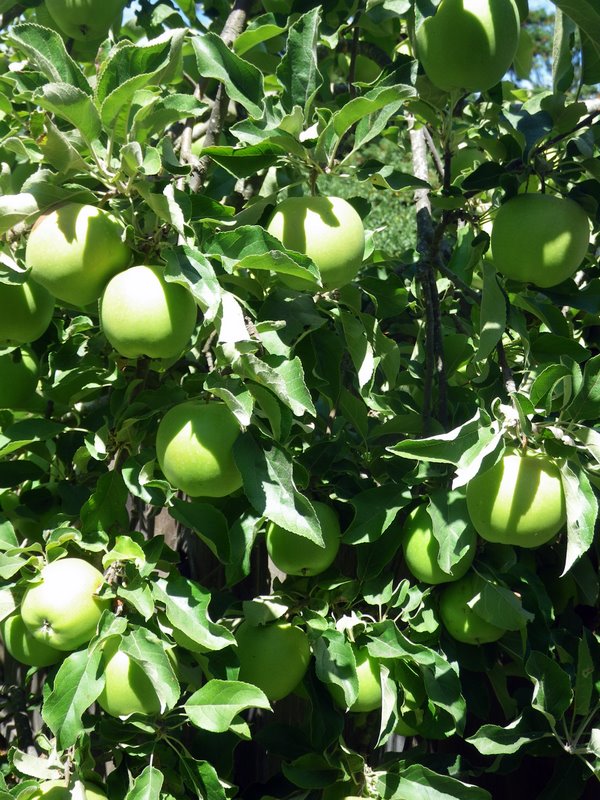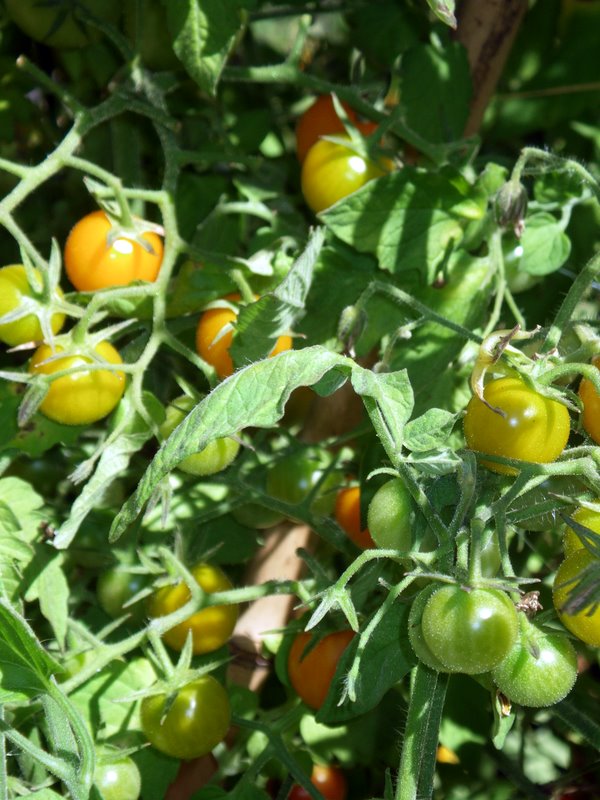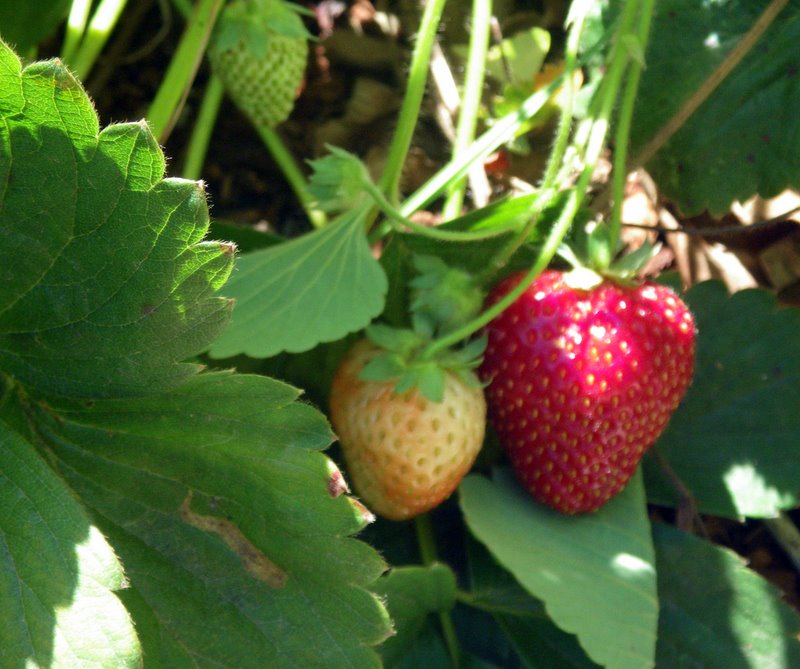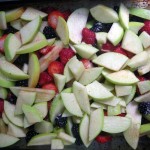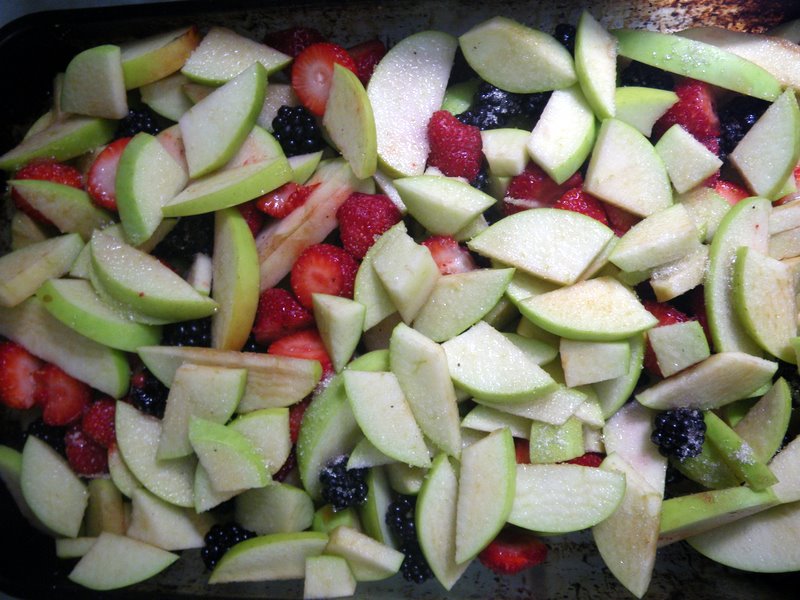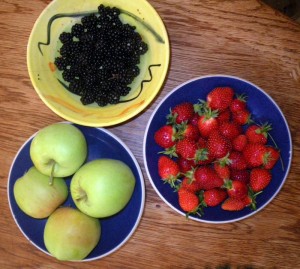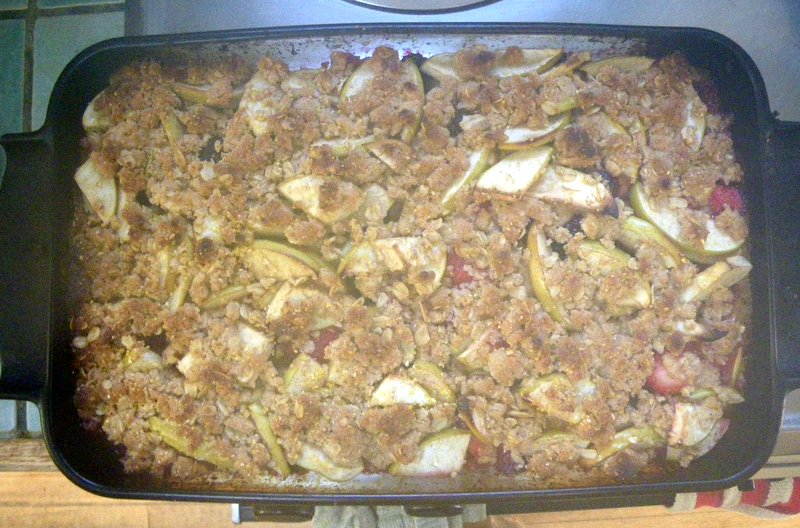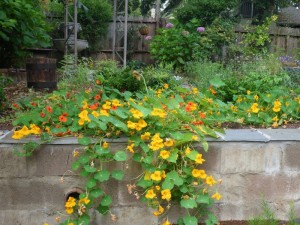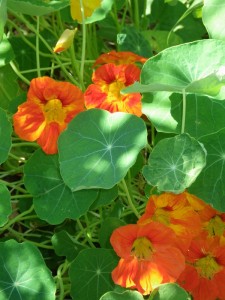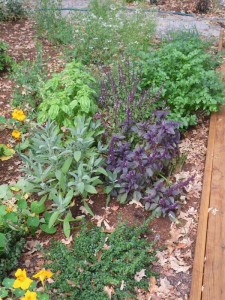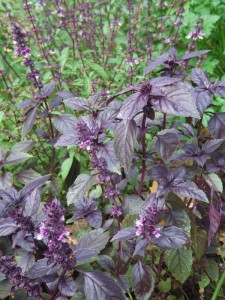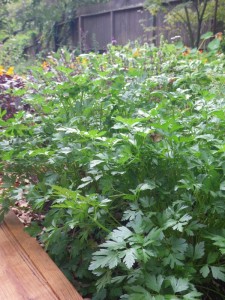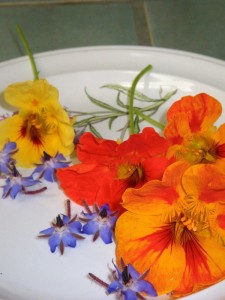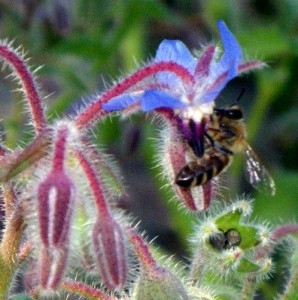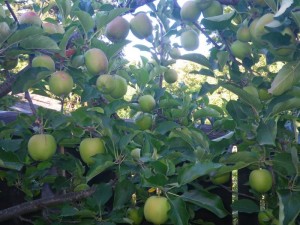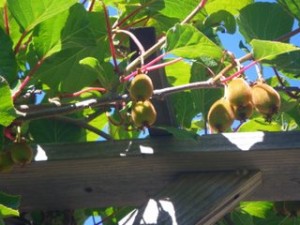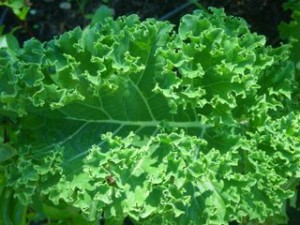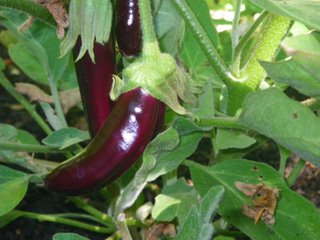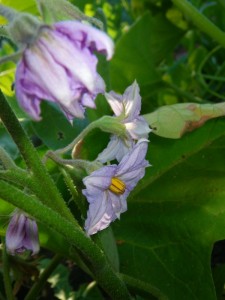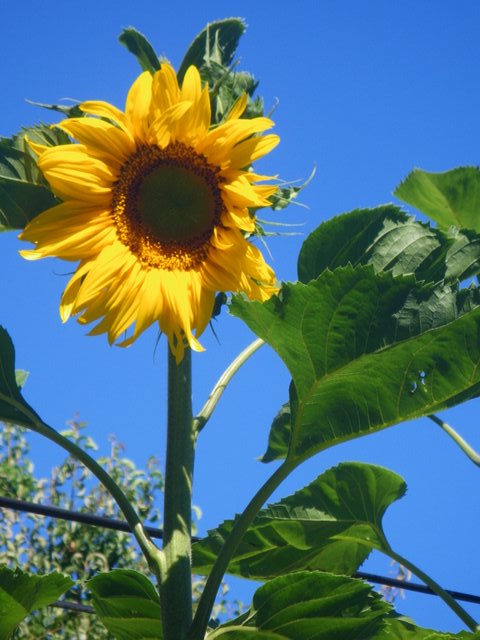
The Fall season in Northern California is the worst time for deer in the gardens. The grasses and other forage in the wildlands have dried up and intrepid deer come wandering into our gardens, looking for something good to eat. If you don’t have a 6 foot fence surrounding your garden, you’ll want to know some herbs that you can count on to be deer resistant.
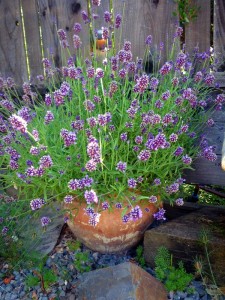
Lavender (click to enlarge)
Lavender is one of my favorite herbs. It is fragrant, easy to grow, doesn’t need much water and deer really don’t eat it. It does need sun and good drainage. It is a perennial plant, that in mild climates, meaning no heavy snow cover, can live for 5 – 7 years. After that, it starts looking worn out and old, and needs to be replaced.
I was surprised to taste how good a glass of ice cold water from a pitcher that had a sprig of mint and a sprig of lavender in it was. As long as you don’t over do it with the lavender, it is really a wonderful flavor.
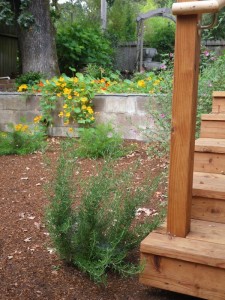
Rosemary at the bottom of steps (click to enlarge)
Rosemary is another absolutely fantastic herb for the edible landscape. It is a multi purpose plant. It is also easy to grow, liking full sun and little to moderate water and doesn’t need much care. It’s evergreen and cold hardy to 20 deg. although some varieties are more tender. You can use it in many styles of cooking. I’ve never seen a deer eat a Rosemary plant, which can’t be said for many plants.
Rosemary varieties can be found as upright shrubs to 6 ft tall, and as low as 1 ft. cascading over walls. The flowers attract birds, butterflies and bees and produce excellent honey. I call this plant the work horse of all herbs.
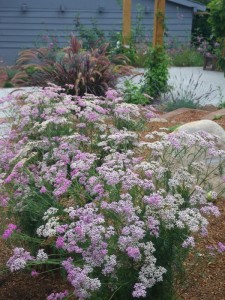
Free blooming pink yarrow (click to enlarge)
Yarrow, called Achillea millefolium, is a beautiful and carefree herb. It grows in all zones in full sun, with little or no water.It has finely toothed leaves and a flower that can be used for fresh or dried bouquets.
You can find varieties of Yarrow with white, pink, red or yellow flowers. There are creeping varieties and ones that grow to 3 ft tall.
Thyme is a well known herb which comes from the Mediterranean. It is a low growing, plant in the mint family. There are some wonderful flavors of different thymes, including lemon, lime, caraway scented and orange scented. I use it as a ground cover between stepping stones. It has a beautiful flower as well as being fragrant when you step on it. As with the other herbs I’ve talked about, this one also doesn’t need rich soil or much water. For maintenance it is best to shear or cut back plants after they flower.
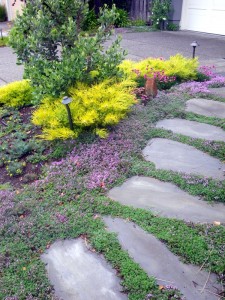
Thyme between stepping stones (click to enlarge)
These are a few of my favorite herbs for the edible landscape. But I promise there are more to come just as wonderful.

